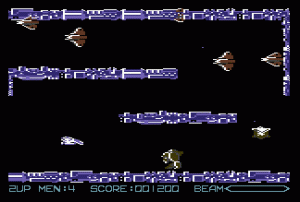
The famous sideways scroller R-Type was in fact released on the C64 by Electric Dreams, but a different version to what was originally planned and was being worked on. Our first real knowledge of something being slightly odd was after comparing the CVG magazine demo to the final release.
It was discovered that there was a whole different set of programmers working on this game at Catalyst Studios. Interestingly around the same the time, Manfred Trenz had completed Katakis, which was banned because of Activision taking out a law suit saying that Katakis was too close to their R-Type licence. A twist would occur later on, when Manfred would go on to code the eventual released conversion – a feat covered in apparently just 7 weeks. Of course, its likely many routines were just lifted and tweaked from the original Katakis source.
The original game was being developed by a chap called David Jolliff, which began well – but due to some development issues as time went on – David got behind schedule. James Smart was brought onto the project to help get the game finished, both to fix up what was present and finish other parts not yet done. James had coded the various pick up weapons and hi-score parts (possibly completion parts), but none of which he doesn’t recall getting integrated within David’s game. Both worked initially at David’s flat on the game.
James comments that the scroll routines were not brilliantly fast and the multiplexer was very glitchy and the sprites would eventually drift more slowly than the scenery around them. It was very early in James’ coding career, so he didn’t have the knowledge at the time to help fix those issues – but he did help make some optimizations to the code to improve proceedings a little.
Additionally the colours were all wrong, and there is a lack of them throughout. James confirmed a few reasons for this, firstly that Mark Jones was colour blind, and the choice of two shades of grey on reflection wasn’t the best idea. There is still no sound in the game. But Barry Leitch, who created the music for the game, recently dug out all the tunes created for the game (Which were never included with the levels). They are now available to download separately.
Activision were not happy at all with how things were going, and decided to bring the developers in-house to finish things off at Electric Dreams. At this time, Activision were in the process of taking the makers of Katakis to court. David and James were desperately trying to finish the game and get it working, but by this point – David was finding the project too much.
In 2013, Bob Pape wrote a fantastic book on his experiences of developing the Spectrum version of R-Type. Here he details a lot about the C64 conversion and has very kindly allowed us to add the details to the site, which you can now read under the Articles tab.
It was all but confirmed that Dave Jolliff and Jim Smart were eventually taken off the project due to slow progress and a lack of it. Dave sadly struggled with the sprite multiplexer in the game, and this heavily slowed things down. What didn’t help at the time was that Bob’s version was coming along very quickly without too many hitches. Bob informs us that both Dave and Jim were almost chained to their workstations to try and get the game finished towards the end, and it got too much in the end. Interestingly, there were questions about whether there were plans for Manfred Trenz to step in quite a bit before the team was dismissed. The release date seems to be approximately the 10th December 1988 – as this was when the first cracks were done.
Interestingly, when Bob saw Dave and Jim briefly whilst being “chained” down, the game was making good progress and a lot of the issues were looking like they were resolved. It is therefore believed that had they just been given the 7 weeks that Manfred was given to write a new conversion, we could have ended up with a superb version of R-Type.
According to Jim Smart though, they were actually given the 7 weeks – but regardless and without their knowledge, Activision had already arranged a deal with the Katakis coders to work on re-skinning/tweaking Katakis to become R-Type on the C64. This done in parallel whilst David and James were working on a conversion that was now never destined to be released. I agree with James in saying that this was pretty underhanded. Eventually Manfred Trenz had his conversion released instead, and the Catalyst Development version was put to rest.
As an aside – contributor Zeldin stumbled over a review for R-Type, which was in ASM magazine dated December 1988 (it came out in November), shots from the version 1 of the game are shown throughout. Reading the review suggested that the reviewers already had a fully playable game. They already gave a ‘hit’-star for it!. The game received great praise and was told to have great music. There is no proof that this means it was complete, as ASM were apparently known for reviewing incomplete games and it seems very much this was the case with R-Type.
What of the game itself? Well, C&VG had released a demo of the game on a special covertape – which looked very good indeed. But a massive find was made by Glenn Rune Gallefoss around 2003 time, when he found that he had most of the original game which he was given by an unknown source. Shockingly, most of the game was there and almost all the levels were present in preview form, although in a very early stage in some cases. This pushes past the one level preview that was only in existence. Already you’ve been able to check the game out for yourself what we have so far. In addition to Glenn’s findings, Jazzcat has passed on a Phoenix and Conquest crack which contains yet another level. In total there are about 6 levels, but level 3 is missing it’s large ship guardian!… James Smart revealed that the ship was never actually started, so its likely this was as far as the level got (but David later surprises us … see below).
This seems to be all that was ever developed of the game, and somehow was leaked out – we’re not sure how. May well have been David that leaked it in the end to a friend or someone. We managed to get hold of David in 2014, thanks to the efforts of Bob Pape, and David suggests that he had a version of Level 3 running with the ship in place, and later versions of some of the levels. He may even still have remains of the conversion, with each level apparently taking up an entire disk side! See Creator Speaks for David’s side of the story, but it seems that now the story of R-Type V1 is almost complete.
Contributions: Zeldin, Deev, GRG/Blues Muz, Barry Leitch, Jazzcat, Bob Pape, James Smart, David Jolliff, Ross Sillifant
Supporting content
Available downloads
- Music_Rtype.zip (zip)
- Preview_RType.zip (zip)
Gallery
Creator speaks
David Jolliff talks about work on R-Type V1:
When asked about when things hit problems…
“It was about halfway into getting the sprite multiplexer working. The problem was that an awful lot of the things moving around on screen were AI controlled and would change position according to you ships position.
This often caused more than 8 sprites to be in a line or overlap. (Ouch!). Activision insisted that the game should be as close to the original as possible and were under the illusion that the c64 was as capable as the arcade machine (not!). This meant that I was under constant pressure to make it do things that were not possible.
The ship on level 3 was started by me without James’ knowledge. I can’t quite remember how far I got with it. I’m reasonable sure that i have the source code in a box tucked away somewhere with my old c128/64. I do remember that I had 7 disks ( a level per disk) on the go.”
James Smart talks about work on R-Type V1:
“Yeah, Bob’s book sheds some light on what happened “” it’s not too far from the truth.
Dave was behind schedule, so I was put onto the project “” both to help fix-up what he had, and to do some of the bits he hadn’t yet done. I recall coding the various pick-up weapons (circle lasers, bouncing lasers and flame weapon), the high-score table, maybe also some game completion stuff? (I don’t recall which of those things got integrated into Dave’s codebase though)
But really it was a case of: too little, too late.
His scroll routines weren’t overly fast, and his multiplexer was glitchy (and its y-sort could seriously be measured in inches!). Oft-times these would combine, and the effect would be that all the sprites would de-sync from the background, and drift more slowly than the scenery.
“” To be fair, I hadn’t really learnt enough to fix those particular things at that point in time, although I did help him make some optimisations to his code that improved things somewhat.
Yes, many of the levels were playable “” No, I don’t believe we had started anything for level 3 (the big ship).
As your above-linked article points out: some of the colours were lacking “” part of the reason for that was because the graphic artist (Mark Jones) was colour-blind! Plus, on reflection, I think choosing two shades of grey for the sprite multicolours wasn’t very bright.
We were originally working on the project in Dave’s flat, but later we were called in-house, to Electric Dreams (a.k.a. Software Studios).
Activision were in the process of suing the makers of Katakis, meanwhile Dave and I were running late “” and he was pretty much melting down “” and it looked like we weren’t going to hit the release date.
In your article you suggest that we may have completed the game if we’d’ve had those extra seven weeks, but, truth be told: my recollection was that we did have most of those extra 7 weeks anyhow, because (unbeknown to Dave) they’d already got those guys working on re-skinning / tweaking Katakis, in parallel, while we were still working away on our now never-destined-to-be-released version.
Underhanded and dirty, really.”
Related articles
Bob Pape has kindly allowed us to put a large extract regarding the C64 version from his fantastic book, which you can checkout here: http://bizzley.com/
“Dave and the C64 seemed to be cracking on, all the background graphics for Level One were in place and he had a ship flying around the screen with some aliens but he did have a major obstacle to overcome, the sprite multiplexer routine he was using just wasn’t capable of handling the large amount of sprites necessary for the game.
The C64 can only display eight hardware sprites a frame unless you implement a sprite multiplexer to ‘recycle’ those sprites again that frame but it’s a very intricate and time-critical thing to code, all the more so if you want a lot more than eight sprites on screen in any one display frame. Get it wrong and sprites don’t just flicker they vanish altogether. So before he could do anything else Dave had to completely rewrite his multiplexer, and more importantly show Activision that the new sprite engine he had was capable of handling everything in the game.
We knew Activision were prepared to accept some differences between the arcade and home computer versions (it was made clear they’d accept ANYTHING halfway decent bearing the name R-Type that appeared on the Spectrum) but more was expected from the C64 version. The question then became just how many sprites could Dave implement per frame to get away with a game that would satisfy Activision? ‘review’ of it all the more suspect. If I was having it easy for a while then it was Dave’s turn to struggle.
The C64 version was inching along slowly but he was still having problems with his sprite multiplexer and unfortunately I didn’t know enough about the machine to make any kind of helpful contribution. While the hardware seemed to offer everything a game coder could want – more RAM, smooth hardware scrolling, raster line interrupts, eight hardware sprites – it was those sprites that were causing the problem. Multiplexing is easy in theory, you tell the processor to put down the eight sprites in the top part of the screen, do an interrupt on the display line immediately below the last one, quickly set up the sprite hardware with another eight sprite positions and data and fool the machine into putting down a second set on the same screen in the same frame.
If you were really good at it you could even fit in a third set of eight before you ran out of time though it was pushing it to put down more than that. The difficult part comes when sprites start to overlap, or one that was at the top of the screen moves down to the bottom, then you’ve got to start sorting Y position values and coming up with all sorts of ways to cut down on the processor time required. It also means that if you want more than sixteen or twenty four sprites on screen then you have to start changing the way the game plays, which isn’t too difficult on a simple single-screen game like Pacman but on R-Type was turning into a bit of a nightmare.
It didn’t help that my version was being used by Activision as a stick to beat Dave with, the argument being that if the Spectrum version did what it did purely through software then the hardware enhanced C64 version should at least be up to equaling if not surpassing it. What Dave was aiming for was an all-in-one routine where you set up the sprites you wanted, where you wanted, and the multiplexer took care of it all for you but every time he thought he had it sorted something would come along and mess it up.
If I was succeeding because I was too inexperienced to realize that what I wanted to do was too much then Dave had the misfortune to keep running head-first into the brick wall of hardware that offered to do it all for you – as long as you did exactly what you were told that is! So a return to Southampton was planned, and while I was there I’d find out what was happening with Dave and Jim and the C64 version of R-Type. I’d had a call from Karl that Activision had got fed up with their lack of progress, which wasn’t at all helped by me saying I’d finished the game, and had ordered the pair to work in-house at the office in Southampton.
This didn’t sound too bad as we’d all had to do it some time but Karl went on to say that they were being held there virtually incommunicado and the pressure was beginning to show, which sounded really worrying. What Karl had said turned out to be true as Dave and Jim were there in one of the glass fronted conference rooms all by themselves.
They weren’t allowed to leave it and no one was allowed to enter or talk to them without clearing it with a manager first. The phone in their room had also been removed so as not to provide any distractions. At this point it looked like they had solved the sprite multiplexer problem bar a few glitches now and again and were trying to play catch up with the game itself.
I was only allowed to see them for ten minutes and it was obvious that they were both highly stressed and close to the edge and if there was anything guaranteed to fuel this it was the work conditions they had to endure. It’s well known that this particular Commodore 64 version of R -Type was never released, instead another version coded by Manfred Trenz at Rainbow Arts who stepped in at short notice was, and I have to say that I doubted this story at the time and I don’t believe it to this day.
Even Activision were convinced that the C64 version would be finished on time as a press release they released at the PCW Show trumpeting the game included the line: “Programmers Bob Pape (Spectrum), Karl Jeffrey (Atari ST) and Dave Jolliff (C64) came together to work as a team on the project.” With the game planned for a November release Activision were publicly announcing that everything was OK with the game as late as mid- September and you do have to wonder just when exactly it was that they started talking to Trenz and Rainbow Arts.
It has been reported since that Trenz and his team put together their version of R-Type in only seven weeks, which means they were either coding their version while Dave and Jim were still working on the original or work started on it immediately after the original was canned. You do have to question Activision’s behaviour in the first case and their loyalty to Dave and Jim in the second. Now that the original version of the game has been posted online you can see for yourself how close Dave and Jim were from finishing the game.
I really believe that if they had been given that seven weeks instead of Trenz their version of R-Type would have turned out just as good, if not better, than the version that finally went on sale. Although I spoke to Dave Jolliff many times after this I never asked him about his time in-house, why they cancelled his version or if he knew why Rainbow Arts – who Activision just months earlier were prepared to sue – were suddenly now their new best friends.
The state Dave was in in that conference room was not something I wanted to remind him of but the game was progressing, slowly yes, but it would have come together. If Dave and Jim’s version didn’t make it it was because Activision pushed them toward a nervous breakdown getting them to finish the game, and the fact that they must have been in talks with Rainbow Arts while doing so makes everything about it just that bit more distasteful.
To rub salt into the wounds Dave and Jim were effectively barred from leaving the building so wouldn’t be going to the PCW Show even though their game would be on display and was being promoted by Activision. Dave had worked the PCW Show the previous year as part of the Activision stand team and now he was being treated like some kind of leper. It was just all wrong. After talking to Dave and Jim, Mike and I picked up our show invitations, left the office and headed off for a bite to eat.
As I’ve mentioned, the original Commodore 64 version was canned by Activision and eventually brought to market by Katakis developers Rainbow Arts. While this version was released on time it doesn’t stand up well against Dave and Jim’s original with several iconic sections of the game being lazily rewritten to accommodate the limitations of the hardware and programming. The rotating Alien Wheel of Level One doesn’t rotate, the Level Three Big Ship is missing 90% of its guns, there’s no Boss Alien at the end of Level Five, the Pistons that move around Level Six look more like 125 cabbages and so on.
Manfred Trenz of Rainbow Arts has said that they only had seven weeks to do the job and it’s by no means a bad conversion, it looks more colourful and plays a bit faster compared to the unreleased version, but at times you can see the limitations imposed on it by the short deadline. With Dave and Jim’s original version now available to download and play for yourself you can do your own comparison review and what is immediately obvious is just how much of the game had actually been completed.
I said this before and I think it’s worth repeating that you do have to wonder if they were given those seven weeks and told they too could bypass some of the trickier parts of the game whether they could have finished it in time. From seeing the state of the game when I left Fareham compared to when I visited Activision just a few weeks later I honestly think they could have done it.
At the time R-Type was released the sixteen bit computer wars were in full swing, software houses supported either the Atari ST or the Commodore Amiga but seldom both and Activision were firmly in the ST camp, which is why the release of an Amiga version of R-Type shortly afterwards came a bit out of left field, However a quick scan of the game credits soon made everything clear….. “a Factor 5 release via Rainbow Arts with thanks to Rob Hylands and Karl Jeffrey.” Activision had decided to do another port and handed over the ST code to Rainbow Arts, again making you wonder just what kind of deal had been done (and when) in negotiating the Commodore 64 version.”
Update history
- 20/06/22 – Added note from artist from ST Action 20.
- 15/09/14 – David Jolliff talks to GTW64 about R-Type V1.
- 28/08/14 – James Smart talks to GTW64 about the R-Type V1 project. We also finally tidy up the mess of a review we had (the result of 10 years worth of notes lobbed together)



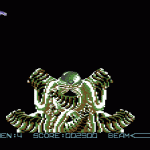
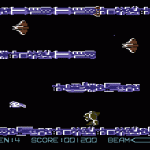




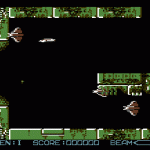
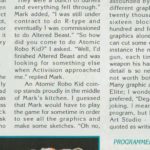

Having read Bob’s book, it’s unbelievable those slavery working conditions, holding workers hostage and incommunicated. Maybe we only play those games for a short time, but people (underpayed and underrated) where leaving their lives on it. Respect.
You can download Bob’s book legaly here:
http://bizzley.com/
I always liked R-Type more than Katakis on C64 and also on Amiga and i still do. Katakis is also good, but the player-ship is to big in my opinion and also the Leveldesign i like more in R-Type. This never-released-version of the game is good. Could have been a great game, but i also like the normal version as i mentioned. The best shooter of all on the C64 for me is Armalyte by the way.
Katakis was and still is a master piece to this day !
Sad to hear it was banned.
It’s also way better than R-Type… what an embarrasement for activation ! HAHA.
I think the R-Type that came about was great. Shame about the multi-load. Should be made into a cartridge. But then hey, MT also gave us Turrican. I think in this instance we got the best version possible.
Never knew R-Type was being coded in my home town..